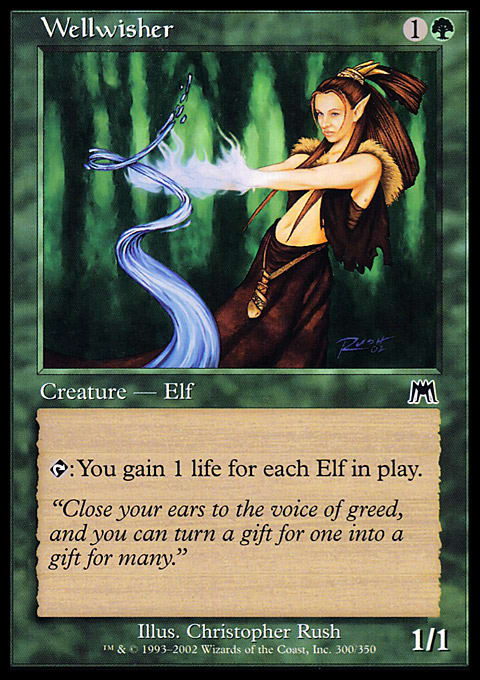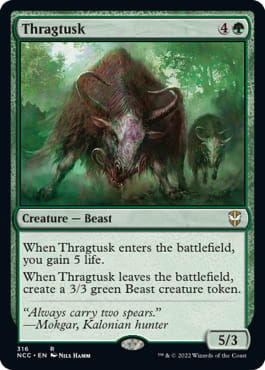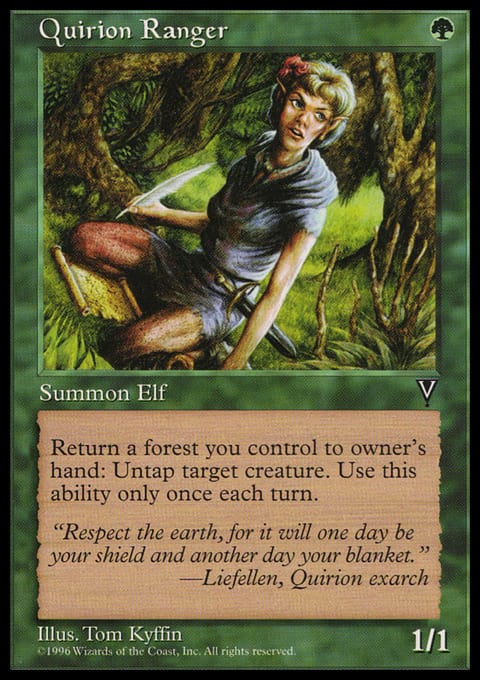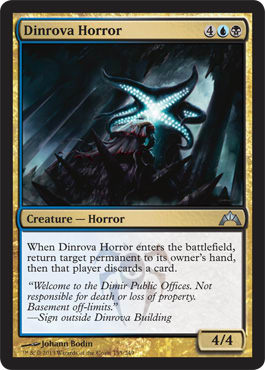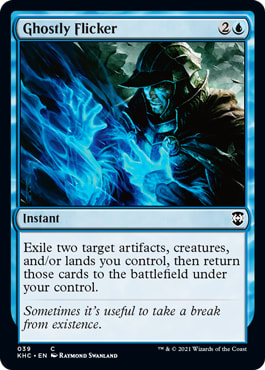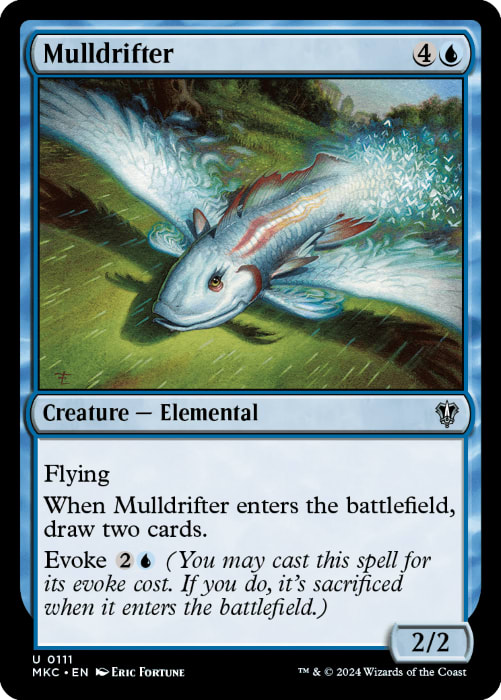If you've seen me around the internet or read my articles over the years, you may know I have a peculiar affinity for a certain Magic card. It's a little elf whose sole use is that it gains you life, and it's one of my favorite cards of all time. It's something people tag me in posts about it or that I get excited when I see unique reprints of it. I'm talking about Wellwisher.
You might think it weird that such an innocuous little card can be arguably my favorite card of all time. Of all the cards out there, how could this be in the top echelon of choices? Simply put: it's the card that helped me level up my game as a kid. I've talked about the card here and there, but I've never gone in-depth as to why I love it so much and the impact it had on me.
First, a little history, just to set the stage so that you can better understand the ways this card helped me improve as a player. I started in 1999, off the back of the Pokemon TCG's original popularity, and learned using Starter 99 products with a little bit of the Standard sets of the era (Sixth Edition, Urza's Legacy, Stronghold). If you're not familiar with what the set was like, I encourage you to go check out the review of Portal by The Resleevables that came out last week. It's pretty comparable, using a stripped down version of the game with only creatures, lands, sorceries, and extremely basic keywords.
You may be wondering why this was such a big deal. Simply put, it meant there were a lot of things I didn't understand because they weren't taught to me and weren't in the Starter 99 rules my sibling and I were using at the time. We basically made up our own rules for first strike and trample, and countering spells was murky even though Counterspell was in Starter 99 itself (they added in a few instants to that set unlike the previous Portal sets). We had no idea what we were actually doing and just slammed cards together with basically no strategy at all using huge five-color decks.
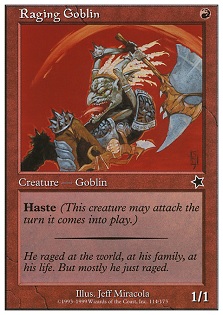 | 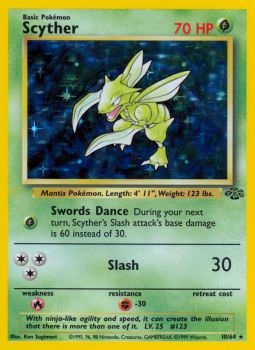 | 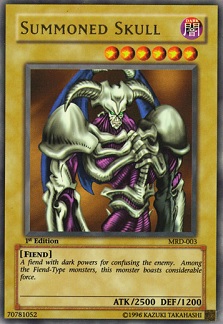 |
Over the following years I started to understand strategic concepts a little better, but still just on a base level. Think of how you can understand that Scyther from the Jungle expansion of Pokemon or Summoned Skull from Yu-Gi-Oh are good because they attack for lots of damage. I could grasp that, but not how you could make a control deck work in either game. It's like how many people come to Magic easily understanding how to play a Mono-Red Aggro deck, but struggling with more complicated archetypes.
Eventually I managed to put something with some modicum of synergy together for my first Friday Night Magic, but, uh, it sure wasn't great. It was a Slivers deck - a creature type I'd enjoyed from the couple I'd gotten to experience from Tempest and Stronghold a few years prior. It just so happens that the slivers of the Onslaught era weren't great, and it ran a bunch of weird one-offs like Decree of Justice and Silver Knight that saw play, but ignored the context of why they were good in the first place.
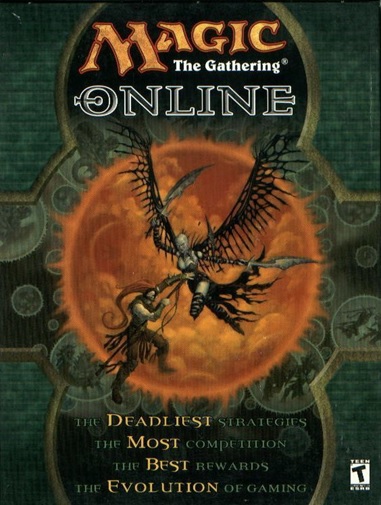
Then came the inception of Magic Online. I came across it in an Electronics Boutique at the local mall (you had to buy a physical version back then) and was able to buy it. I managed to scrape together some cards and build a deck on it, and while it wasn't great, it was fun. Playing on the client made me learn more about all those rules I didn't understand growing up, and I was able to grasp the basics a little more, which made me want to try more that the game had to offer. Given my love of slivers, I opted to try out the format known as Tribal Wars. There, I had my first experience with Elves and I got stomped.
I found myself wanting to try it out for myself, and given that many of the best elves were cheap commons, it was well within my means to play. Think cards like Timberwatch Elf, Llanowar Elves, Heedless One, Wirewood Hivemaster - all fairly accessible cards. Right off the bat, I ran into a mirror match, and that's where the Wellwisher shenanigans come into play.
You see, most new players lose their minds when they see a life total go up to around 50 or 60, which can happen reasonably in a typical game given the right conditions. During this very first mirror match, though, both sides of the table had multiple Wellwishers, a copy of Ambush Commander, and several other elves to go along with them. Every turn, each side of the board was gaining around 100 life and was squarely unable to break through the opposing ranks. As a result, by the time the game ended, each player had multiple thousands life! My mind wasn't just blown, it was shot straight to Mars!
For most people, this would simply be a memorably exciting moment. For me, it showed me a whole new angle on how to approach the game.
You see, one aspect of Magic gameplay that people often overvalue in their early years is life gain. I know I did it and you probably did too. Back in the day, I'd play cards like Fountain of Youth, Alabaster Potion, and Stream of Life. Have you seen these cards? They're awful! But they lend to a common bit of design theory you may have heard before. The idea goes that if you cast a spell that only gives you life, how much does it need to give you to be worth it?
With something like Stream of Life, you can change the amount you get, but if it costs you 5 mana for four life when you could spend that on a Thragtusk, it's just not even close. The Thragtusk will give you five life and give you some serious beaters as well! Around the time of Magic 2013 (where Thragtusk was first printed) you saw this thought experiment come up more thanks to the recent printing of Archangel's Light which was famously lambasted for being a truly awful card in terms of playability.
This begs the question of where Wellwisher lies along these lines. All it does is gain you life after all, right? Well, yes, that is its primary use, but it does a bit more than that. When you break it down to its usual role in Elves decks, it often comes down to doing additional things in addition to gaining life:
- Eats a removal spell.
- Attacks for small damage in relevant moments.
- Chump blocks as needed.
- Can tap for mana using something like Birchlore Rangers.
These are sort of hidden modes for the card. Generally, you want to use the card for its primary use of gaining large amounts of life. It's when you're able to recognize that there's more that you can do and it doesn't always have to do just that one thing that you can start to develop additional strategies. You might have plenty of life and determine you're in a matchup where you won't have good attacks later on, so attacking Wellwisher might be correct. Alternatively, you could anticipate that your opponent will use a removal spell against you and use Wellwisher as a lightning rod. Each of these are concepts that are difficult to grasp early on, but once you understand them can prove extremely useful.
In regards to the original point of how much life gain you get out of Wellwisher, it might seem hard to gauge. For example, if you get to untap with it and only have five elves total on the board, you're only gaining five life. That's not a lot! However, over multiple turns, that can be fifteen life! Or if you have a bunch of elf tokens, you can find yourself getting ten life in one turn as well. If you have a means of untapping the Wellwisher then with, say, a Quirion Ranger or a Wirewood Symbiote, you can easily gain twenty life off of a single Wellwisher in one turn.
In short: it's a card with a fairly low floor but a seriously high ceiling. Even that low floor isn't as low as it seems, since if you're making your opponent remove it to prevent further life gain, you've cost your opponent a removal spell. You probably haven't quite two-for-oned your opponent in this case, but it's probably more like one-and-a-half-for-one. You're still coming out ahead here!
What ultimately made me level up so much from playing with Wellwisher, though, was in just how high that ceiling goes. In fact, you can gain so much life that it changes the dynamic of the game completely! Going back to the original game of Tribal Wars that I played on Magic Online, both my opponent and I stonewalled one another with how much life we were getting every turn. This was before the mirror breaker Viridian Longbow entered with Mirrodin, so there wasn't a good way to break the stalemate. Eventually, one of us milled out and lost from that.
Basically, so much life was gained that that element alone ended up deciding the winner! It was a concept I'd never thought of before. Up until this point, the only games I'd ever won were from taking an opponent's life to zero. I'd never considered that you could achieve victory via other means, and certainly not by gaining tons of life!
This alternate style of winning persists even to this day, to some extent at least, in Pauper. The format of commons is the only place you'll still see Wellwisher show up in a competitive setting. My favorite examples of this generally involve Flicker Tron.
Flicker Tron is a control deck that essentially wins by locking your opponent out of the game and then either striking their life total hard or forcing them to mill them out. One such way the deck could do this is by using Ghostly Flicker along with Mnemonic Wall and Dinrova Horror to repeatedly bounce permanents off the board and force them to be discarded away - even lands! Eventually, it's not a stretch to find yourself with no permanents on the battlefield at all. At that point, your opponent can just beat you down and then eventually you'll lose.
Sounds like a losing proposition, right? Well, with Wellwisher, you might surprise yourself at how that can not be the case! Even if you find yourself in an opponent's lock, you can still gain lots of life. Let's say you can get yourself up to 500 life before the Dinrova Horror comes online - childs play for a Pauper Elves deck. You can actually lose your entire board and win!
If a Flicker Tron player has all the creatures in their deck on the battlefield, they'll usually have around 15-20 power on the board. Given how much the Flicker Tron decks draw through their deck, if your opponent has four Mulldrifters, a Dinrova Horror, two copies of Stonehorn Dignitary, and two Sea Gate Oracles, that's 16 damage. It will take your opponent 32 turns to kill you in this manner, meaning that if your opponent has less cards than that in their library and no additional damage spells, there's no way for them to deal enough damage to kill you before you mill out!
Many of these ideas may strike you as fairly simple concepts in Magic game theory, and that's true, because they are. However, when you're a new player, these are the kinds of things that send your brain into overdrive. If you can win the game by gaining tons of life, what other methods can you use to win? To gain that much life, you also have to have some cohesive strategy by utilizing more elves. To that point, what other kinds of strategies might be out there that you can do cool things with?
Wellwisher was the spark that helped me understand these critical concepts. Thanks to my attendance at FNM and my usage of Magic Online at the time, it also happened to fire off my first real thirst for competitive play. The fact that it came in such a small and simplistic package just influenced me further, showing that even the most innocuous looking card can have some of the biggest impacts in the game. It's been a major influence in how I approach the game in the twenty years since Onslaught's release and continues to be a card I love to slam onto the table any time I get the chance. It's one of my favorite cards of all time and will be for as long as I play this game.
Paige Smith
Twitter: @TheMaverickGal
Twitch: twitch.tv/themaverickgirl
YouTube: TheMaverickGal
















